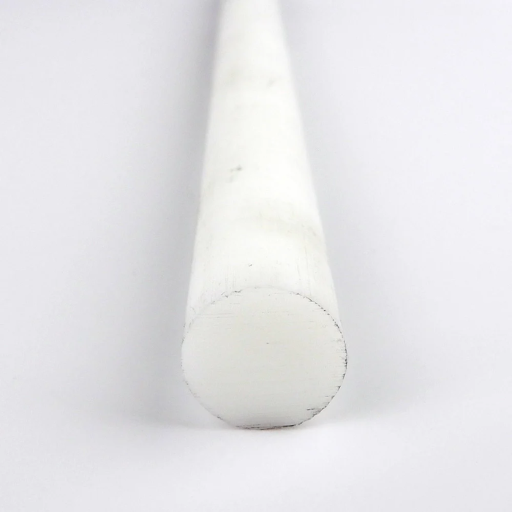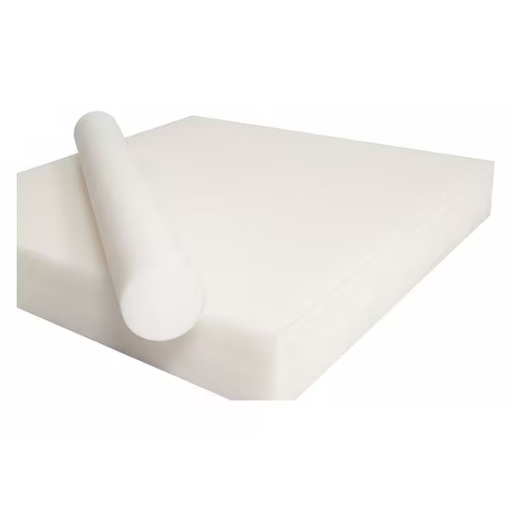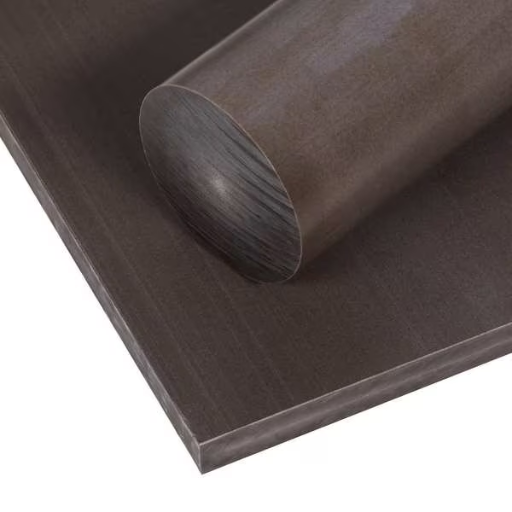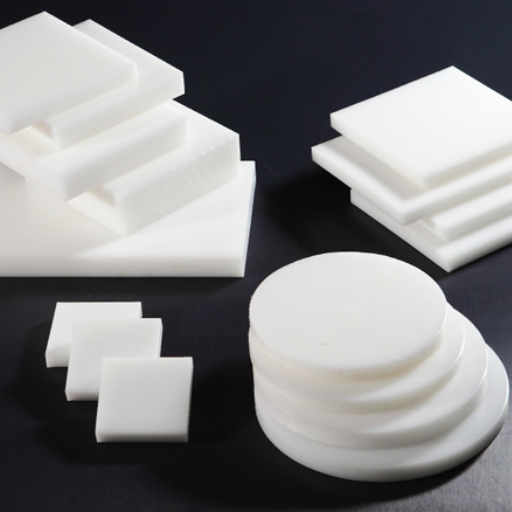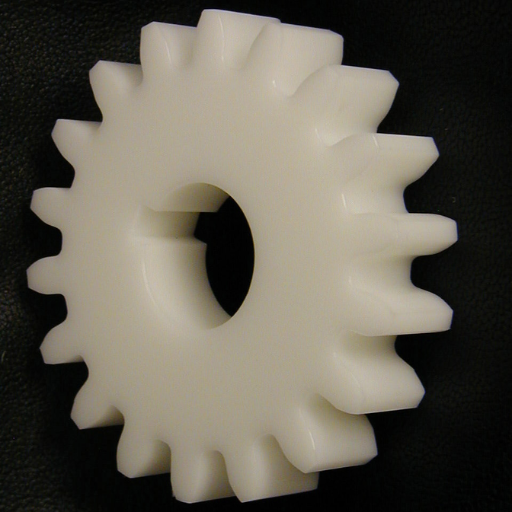Acetal homopolymer, also known as polyoxymethylene (POM), is a highly versatile engineering thermoplastic that holds a prominent place in the world of material science. Renowned for its exceptional mechanical properties, low friction, and high dimensional stability, this polymer is widely used in a multitude of industrial applications. This comprehensive guide aims to demystify acetal homopolymer, exploring its unique characteristics, benefits, and diverse applications. From its role in automotive and aerospace industries to its significance in consumer goods and medical devices, our article will provide a thorough understanding of why acetal homopolymer is a preferred material for engineers and designers alike. Join us as we unlock the full potential of this remarkable polymer, shedding light on its contributions to modern engineering and innovation.
What is Acetal Homopolymer and How Does It Compare to Copolymer?
Defining Acetal Homopolymer and its Unique Characteristics
Acetal homopolymer or simply POM is a kind of plastic known for providing exceptional mechanical strength, excellent stiffness, and low friction. This high dimensional stability has changed the game for me as an engineer, especially if I am working on applications that require the highest precision. For example, acetal homopolymer really comes into its own when I am designing automotive components that need to perform consistently even under different temperatures. The fatigue endurance and mechanical strength of the homopolymer version exceeds those of acetal copolymer making it my preferred choice in high stress conditions. Therefore, the unique properties of acetal homopolymer like it being durable and reliable have made it to be vital in many of my projects such as gears, bearings or intricate medical devices.
The Differences Between Acetal Homopolymer and Acetal Copolymer
In my opinion, understanding how these materials differ from one another is vital in selecting the best material for a project. Acetate homopolymers are more crystalline than Delrin; hence their mechanical properties are also improved significantly (higher tensile strength, higher modulus). Due to this reason they are highly recommended for use in areas requiring very close tolerances withstanding temperature change. In many instances I will choose to work with a homopolyer because it has better dimensional stability and resistance to wear thus lasts longer.
On the other hand, there are several advantages associated with acetate copolymers. These materials have reduced moisture absorption as well as lower levels of chemical attack thereby avoiding degradation under harsh environments. Copolymer is useful where ever environmental changes are likely or less precise dimensions can be tolerated. Furthermore, copolymers usually machine better therefore reducing manufacturing effort/costs involved unlike others such as Delrin which may not machine easily at all. While both types have got their own strengths; knowing what makes them unique enables me to make informed choices for any particular use.
Why Choose Delrin® Homopolymer Over Other Polymers?
As per my point of view, one would choose Delrin® homopolymer over other polymers because of its great mechanical strength, reliability and ease of handling. The high tensile strength and modulus in the case of Delrin® homopolymer also makes the material applicable in areas experiencing a lot of stress hence this guarantees that what I manufacture remains durable for longer. Secondly, maintaining exact tolerances is critical for precision parts which is why good dimensional stability is important in Delrin® homopolymer. Additionally, it resists fatigue well enough such that even when being used in components exposed to repetitive loading they can still function correctly without wearing out. It has become so adaptable that I am confident using it across a wide range of applications knowing fully well that its performance will always exceed expectations. In general, these are the considerations which have made Delrin® homopolymer as my preferred choice whenever I require materials with high tensile strength, accuracy and dependability.
Exploring the Benefits of Acetal Homopolymer in Engineering Applications
High Acetal Homopolymer’s Strength and Stiffness
When I look at the high strength and stiffness of acetal homopolymer, it is second to none for some engineering applications. Its impressive tensile strength allows it to withstand a lot of mechanical stress without deforming which is important when designing components that must retain their shape under loading. Moreover, acetal homopolymer’s intrinsic rigidity means that parts don’t lose their shape or function when working in tough environments. This combination of strength and stiffness enables one to create long-lasting parts as well as have faith in their performance throughout significant periods. Consequently, acetal homopolymer becomes an indispensable choice in my projects since they should be reliable and structurally viable.
The Benefit of High Creep Resistance in Acetal Materials
In my experience, acetal materials are excellent when considering high creep resistance. Engineering applications can sometimes suffer from creeping – where a material undergoes continuous deformation under constant stress. Nevertheless, the acetal homopolymer I am using possesses high creep resistance meaning that parts made out of this material can retain their sizes and structures over prolonged time even when subjected to steady loads. This property is important especially for application with long mechanical stresses because it adds up longevity and reliability into components design. From the use of acetal homopolymer, I am able to develop parts with improved performance standards by going beyond expectation thus leading to stronger and more dependable engineering solutions.
Low Moisture Absorption and its Influence on Dimensional Stability
One feature of using acetal homopolymer that has always struck me is its low moisture absorption rate. In some cases, dimensional stability plays a critical role during component designing; therefore this characteristic becomes very crucial according to my point of view if we want the breakdown process to be more understandable for readers.
- Low Moisture Absorption: First off, this implies that the material does not absorb water from the surrounding environment which happens to be an important parameter especially in applications where parts will be subjected to moisture or high humidity. Consider the following:
- Dimensional Stability: Some materials may change dimensions and swell when water is absorbed by them. However, this is minimized by acetal homopolymer. For instance, I have used it in parts that should fit tightly within narrow tolerances, yet the parts did not change their dimensions significantly even under moist conditions.
- Consistency in Performance: Materials absorbing moisture become weaker and more flexible. Acetal homopolymer on the other hand keeps its mechanical properties intact because of low moisture absorption. This includes maintaining its rigidity, strength, and overall durability over time.
- Corrosion Resistance: Moisture can also lead to corrosion in some materials; however, acetal homopolymer’s resistance to such situations minimizes the risk of corroding metal-to-plastic contacts.
- Surface Quality: One reason why long exposure to water might negatively affect a material’s surface and make it rough or uneven sometimes is due to low moisture absorption rates as seen with acetal homopolymer which retains a smooth surface finish for components that need sliding or interaction with other elements seamlessly.
The low moisture absorption of polyoxymethylene widely improves the dimensional stability of parts, thus ensuring their reliable functioning and preservation in any environmental conditions. Acetal copolymer is a perfect alternative for every engineer seeking to design components that can be used in environments with fluctuating humidity levels without sacrificing on precision and performance.
Acetal Homopolymer vs Delrin®: What’s the Difference?
Differentiating Delrin® Homopolymer from Acetal Copolymer
When it comes to differentiating between Delrin® homopolymer and acetal copolymer, I find that approaching the similarities and differences in an easy-to-understand manner helps. Both engineering materials are widely used, but they have properties that differ from one another.
First let us start with Delrin®, which is a brand name for acetal homopolymer. As such it has uniform molecular structure, giving excellent mechanical strength and stiffness. Personally, my favorite features of Delrin® are:
- High Mechanical Strength: It has superior tensile strength and stiffness resulting in a more rugged material for demanding applications.
- Low Friction and Wear Resistance: With its high resistance to friction and low wear rates, Delrin® is the best choice for gears or bearings where smooth operation is required.
- Dimensional Stability: The low moisture absorption of Delrin® ensures dimensional stability; hence parts do not swell or change their dimensions significantly.
- On the other hand, acetal copolymer shares certain similarities with Delrin®, but also exhibits some unique advantages over it:
- Excellent Resistance to Chemicals: Generally, Chemical resistance of acetal copolymers is superior to others in this class making them suitable for solvent sensitive environments and many other types of chemicals.
- Improved Thermal Stability: Acetal Copolymers exhibit better thermal stability than Delrin®, especially in high temperature applications. It can be critical when components must withstand long-term heat exposure.
- Lower Cost: Comparatively speaking Copolymer tends to be somewhat cheaper than Delrin® making it more inexpensive in cases where extreme strength is not needed as much as economy as primary requirement.
Knowing these differences guides me on appropriate choice of material for specific applications. For heavy duty mechanical work that demands high performance I prefer using DalrinⓇ while I choose acetal copolymer when working within chemically harsh conditions or when cost is important.
Performance and Processing Differences
From my experience, choosing between Delrin® and acetal copolymer often comes down to weighing performance needs against processing requirements. When it comes to highly stressful mechanical situations that require components with high resistance to wear, Delrin® stands tall. With unparalleled durability and low friction, Delrin® ensures longevity and reliability even in extreme environments.
In cases where chemical resistance and thermal stability are at stake, I opt for acetal copolymer. Often it has been tested that it can handle a wide range of chemicals better than Delrin®, which also performs well under high temperatures. In addition, the cost efficacy of this material cannot be ignored in determining the feasibility of projects bound by financial constraints.
Processing these materials also presents unique considerations. While DelrinⓇ may have quite a number of issues related to its sensitivity during processing requiring careful control in order to prevent thermal degradation on it; Acetone Copolymers offer some amount of flexibility during processing thus simplifying manufacturing process and reducing total costs.
Overall, my choice hinges on a balance between the specific performance requirements and the practical aspects of processing within my projects.
Application-Specific Considerations for Delrin® and Acetal Homopolymers
When considering application-specific needs, Delrin® and acetal homopolymers offer distinct advantages depending upon the scenario. In applications such as gears or fasteners requiring high precision, this material outperforms others due to its superior mechanical properties coupled with minimum friction resulting into long term performance as well as trustworthiness. It has especially found excellent use in automotive industries including other industries that need durable products.
This is contrasted by instances of recurrent exposure to different chemicals or where fluctuating temperatures are witnessed, acetal homopolymers stand out. The excellent chemical resistance and temperature stable nature make it a good fit in the chemical processing industry as well as the food service industry where material integrity must be maintained at all costs.
In making the decision between Delrin® and acetal homopolymers, the specific needs of the application must be closely considered so that mechanical strength and endurance are weighed against chemical resilience and ease of processing. Each of these materials has its own strengths, which if matched with project requirements allow for best performance and cost effectiveness.
Understanding the Technical Information of Acetal Homopolymer
Properties of Acetal Homopolymers, which are Key to their Suitability for Use as Engineering Materials
Through my experience, understanding the properties that are essential in acetal homopolymers has deepened my capacity to leverage these materials effectively in various applications. Among these, is tensile strength which I have found remarkable in acetal homopolymers. As such they are able to withstand significant stress and strain without deformation hence making them suitable for use in components that have heavy loads and have high frequency of mechanical action.
Another aspect that I pay particular attention to when choosing materials is the wear properties. This makes it possible for acetal homopolymers to maintain their integrity even after prolonged usage especially under high friction conditions. Reduction in wear means longer life, lower maintenance requirement and thus this property is particularly beneficial when producing things like bearings or conveyor belt parts that are always on the move.
Moreover, impressive dimensional stability characterizes acetal homopolymer as well. They do not suffer from moisture absorption and retain their shape and structural integrity across a range of temperature extremes and environmental conditions. This property is critical whenever precision and reliable performance are demanded such as industrial machinery or consumer products for instance.
By assessing these important properties – tensile strength, wear resistance and dimensional stability – I am able to make informed decisions ensuring that the material I select satisfies stringent requirements of different projects leading to dependable outcomes.
Acetals Homopolymer Chemical Resistance and Solvent Compatibility
In my experience with acetals homopolymer chemical resistance has always been advantageous. Their resistivity against many solvents among them hydrocarbons, alcohols or esters explains why they can be used where exposure to such substances cannot be avoided. The main reason why I usually prefer using acetals homopolymer in my projects is that it can tolerate chemicals without compromising its structural integrity. Besides this, mild alkalis and acids have no effect on their performance, thereby broadening their applications in many areas. This inherent resistance to chemical interaction extends the life span of components and at the same time lowers failure risk with resultant increase in reliability and safety.
Acetal Homopolymer Thermal Properties and High Temperature Performance
From my observations, acetal homopolymer’s thermal properties make it well-suited for high temperature applications. One such parameter is its high melting point which normally ranges between 165°C-175°C. This implies that even under intense heat conditions, there are no chances for structural damage in the material. In addition, it has a low coefficient of thermal expansion that makes it resist significant dimensional change when temperature alters. Such stability is vital in parts that require tight fits to maintain precision.
Again, acetal homopolymer possesses good thermal insulating abilities that enable it to withstand heat dissipation. Its ability not to conduct heat very easily is attributed to its relatively low thermal conductivity. This could be useful particularly where parts have to stay exposed to heat but must not transfer it across into other neighboring components. Finally, the material has good creep resistance after continuous thermal loading; hence it does not experience permanent deformation under constant loadings or elevated temperatures;
The acetal homopolymer’s reliability for thermal stability and performance requirements can be seen in these aspects of high melting point, lessened coefficient of thermal expansion, remarkable insulating properties and fair creep resistance. Such detailed thermal resilience will make any part made from this material last long and function reliably.
Applications and Uses of Acetal Homopolymer in Various Industries
Acetal Homopolymer and Electrical Components
The use of acetal homopolymer in electrical components has been very advantageous due to several reasons. First, I admire its high melting point which is normally between 165°C and 175°C. As a result, this means that it does not lose its shape or form easily when heat is introduced; therefore, it can be relied upon for components that are subjected to high temperatures.
Another important thing about it is that it has a low coefficient of thermal expansion. This just means that the material does not expand or contract much with temperature change. The reason why this is critical is that it guarantees that the different parts fit together properly without any spaces or misplacements.
Thirdly, there are its excellent thermal insulation properties. A low thermal conductivity indicates poor heat transferability of the material such as in electrical devices so as not to cause heating up of adjacent parts which may cause damage. This property becomes critical in circuitry where overheating might lead to malfunctioning.
Lastly, good creep resistance is a breakthrough factor. What this implies is that the material does not get damaged under constant pressure and temperature variations permanently. Therefore, with time these components remain in useful condition and work dependably.
- High Melting Point: 165°C – 175°C
- Low Coefficient of Thermal Expansion: Maintains precise fits despite temperature changes
- Excellent Thermal Insulation: Low thermal conductivity to avoid heat transfer
- Good Creep Resistance: Resists permanent deformation under stress and heat
Taken together, these attributes place acetal homopolymer as an outstanding choice for electrical components requiring stability, precision and durability across diverse applications.
Machine Parts Made from Acetal: Durability And Low Friction
For instance, when using acetal in machine parts I am confident about how well they withstand friction and how long they last reliably. This type of material exhibits very low friction levels on most surfaces making such objects move easily against each other reducing wear and tear. It is a game changer in cases, where parts have to slide or rotate on each other continuously.
More over, acetal is highly durable. From my experience, machine components built with acetal last significantly longer and maintain their structural integrity over time, even under continuous stress. This means less frequent replacements and maintenance, which is a huge cost saver. The material’s tough nature that resists mechanical stresses makes it perfect for engineering applications where longevity and efficient operation of machine parts are desired.
Acetal Homopolymer in Medical Devices and Food Contact Applications
Acetal homopolymer plays an important role in medical devices and food contact applications; this fact has been witnessed by me. In the medical industry, this material is biocompatible, does not absorb much moisture content, can be sterilized without degradation thus making it ideal for manufacturing precision components such as surgical instruments, drug delivery systems as well as diagnostic equipment. I have come across these devices made from acetal homopolymer before; they perform efficiently thereby minimizing chances of failure that would risk patients’ lives.
In food contact applications, acetal homopolymer is FDA compliant (food safe) and resistant to chemicals to prevent leaching of harmful substances into foods. I appreciate how it maintains its structural integrity and smooth surface which ensures hygienic conditions as well as ease of cleaning. Acetal homopolymer consistently provides the durability and safety necessary in environments where both human health and product integrity matter whether used in conveyor parts or kitchen utensils or beverage dispenser units that meet standards for food manufacturing industries.
Machining, Molding, and Care of Acetal Homopolymer Materials
Guidelines on Injection Molding with Acetal Homopolymer
Acetal homopolymer injection molding is a careful process and one that has to be approached cautiously to get the best possible results. According to me, keeping a consistent melt temperature is very important and should range between 190°C and 220°C. It’s essential to make sure that the material is adequately dried before processing, I always target for moisture levels below 0.2%. Proper drying prevents problems such as hydrolysis from occurring as well as maintaining the mechanical qualities of the material at their best level. Additionally, mold temperatures must be maintained within 80°C-105°C in order to aid proper crystallization and dimensional stability.
I have however learned that applying right injection pressures and speeds are very fundamental. Usually, high injection pressure ranging between 5000 to 15000 psi helps in filling intricate mold designs. However, there should be caution not to go too far with pressure causing flashing or other defects. Cooling phase on its part is equally important; rapid uniform cooling helps reduce warpage ensuring final product maintains its intended dimensions. With these best practices, I can consistently produce high-quality parts having exceptional mechanical properties and surface finish.
Guidelines for Machining Delrin® And Other Acetal Homopolymers
When it comes to machining products like Delrin® among many others made from acetal homopolymers, I have found there are several keys for success that must always be borne in mind including:
- Choosing the Right Tools: In general, carbide tools should be used since they stay sharp longer than high-speed steel tools do. This is crucial while achieving refined cuts.
- Cutting Speeds and Feeds: Cutting speeds of between 200-400 surface feet per minute (SFM) allow for optimum performance according to my observation. The feed rates on the other hand should fall within this range of 0.004 -0.012 inches per revolution (IPR). These guides help in minimizing heat build-up and obtaining a neat cut.
- Controlling Temperature: Acetal homopolymers that include Delrin® tend to be heat sensitive. I always use coolants or compressed air to avoid thermal degradation and maintain dimensional stability as this keeps the temperature down and prevents the material from warping or melting.
- Clamping and Fixturing: Machining should not cause movement of the material, hence proper clamping is vital. I use soft jaws or padded clamps to prevent surface damage on the workpiece. Easy fixation of the workpiece helps in getting precise cuts thus reducing chances of spoilage occurring.
- Reducing Chip Buildup: Improper management can lead delrin into producing long stringy chips which if not looked after well could jam the tools. To prevent any issues during machining, either chip breakers are used, or chips are cleaned out at intervals by either stopping totally.
- Finishing operations: For finishing with smooth surfaces, final passes should be made with lighter cuts. Polishing using fine sandpaper or a polishing compound would also help achieve high-quality surface finish.
I have managed to achieve highly accurate parts with excellent surface finishes all through following these instructions. Each step ensures that the mechanical properties of Delrin® including other acetal homopolymers are maintained throughout its machining process.
Maintenance and Care for Acetal Homopolymer Products
In order for acetal homopolymer products like Delrin® to last longer and perform accordingly it calls for their proper maintenance and care procedures. This is how I go about maintaining them:
- Regular Cleaning: I like to wash acetal parts with a mild soap and water solution so as to avoid the use of any strong chemicals that might ruin the material. If it is really dirty, diluted isopropyl alcohol can be used.
- Avoiding Excessive Heat: I have always kept my products away from heat sources since acetal has a high temperature sensitivity. This helps prevent any potential warping or deformation.
- Proper Storage: Whenever I am not using them, these parts are kept in cool dry places. Moisture and UV are minimized which sustains its properties.
- Inspection for Wear: On a regular basis, inspection of wear on acetal components such as scratches or deformations is done by me. Early identification enables prompt repairs or substitutions thus ensuring continuity of workability in these items.
- Lubrication: Proper lubricants compatible with acetal should be used on moving parts. It helps reduce friction and extends component lifetime.
Through observing these maintenance practices, acetal products have consistently maintained their mechanical soundness and surface quality thereby providing continued reliability over time.
Reference sources
-
Plastics Technology – Industry Publication
- Summary: An article in Plastics Technology titled “Exploring the Applications and Advantages of Acetal Homopolymer” offers a comprehensive overview of the properties, processing techniques, and industrial applications of Acetal Homopolymer. The article delves into the material’s high strength, stiffness, chemical resistance, and low moisture absorption characteristics that make it ideal for various engineering applications. It also discusses molding considerations, design guidelines, and market trends related to Acetal Homopolymer.
- Relevance: Plastics Technology is a trusted source for in-depth coverage of plastic materials and processing technologies. This article serves as a reliable resource for engineers, designers, and manufacturers interested in harnessing the full potential of Acetal Homopolymer in product development and industrial applications.
-
Journal of Applied Polymer Science – Scientific Journal
- Summary: A research paper published in the Journal of Applied Polymer Science titled “Mechanical Properties and Performance Evaluation of Acetal Homopolymer in Engineering Applications” presents a scientific analysis of the mechanical behavior, thermal stability, and tribological properties of Acetal Homopolymer. The study explores factors affecting the material’s performance under different loading conditions and environmental exposures, offering valuable insights for material selection and design optimization.
- Relevance: Published in a renowned polymer science journal, this research paper provides authoritative information on the mechanical and performance characteristics of Acetal Homopolymer. It is a valuable reference for researchers, material scientists, and engineers seeking a deeper understanding of the material’s capabilities and limitations.
-
DuPont™ Delrin® – Manufacturer’s Website
- Summary: DuPont™ Delrin®, a leading producer of Acetal Homopolymer under the brand name Delrin®, offers a technical guide on their website titled “Unlocking Innovation with Delrin®: Properties, Processing, and Applications.” This resource provides detailed information on the specific properties, machinability, chemical resistance, and design considerations of Delrin® Acetal Homopolymer. It includes case studies, technical data sheets, and application examples across industries such as automotive, consumer goods, and electronics.
- Relevance: As a recognized manufacturer of high-performance polymers, DuPont’s technical guide is a valuable source of information for professionals looking to leverage the unique properties and versatility of Acetal Homopolymer. This resource is essential for engineers, material specifiers, and product designers seeking reliable insights and technical specifications for utilizing Delrin® in diverse applications.
Frequently Asked Questions (FAQs)
Q: What is acetal homopolymer, and how does it differ from copolymer acetal?
A: Acetal homopolymer, commonly known as polyoxymethylene (POM) or under trade names such as Delrin, is an engineering plastic known for its high strength, stiffness, and excellent wear properties. Unlike copolymer acetal, which is synthesized from a reaction between formaldehyde and another derivative, homopolymer acetal is produced by polymerizing formaldehyde directly, resulting in a material with slightly higher mechanical properties and lower porosity. This makes homopolymer types like Delrin® more suitable for applications requiring high precision and minimal water absorption.
Q: Why is low water absorption important for applications using acetal homopolymer?
A: Low water absorption is crucial for applications using acetal homopolymer, especially in wet environments, because it ensures that the physical properties of the material remain stable. Acetal absorbs minimal amounts of moisture, which means it will not swell, warp, or lose mechanical integrity over time as some other plastics might. This characteristic makes it an ideal choice for components used in fluid handling, underwater, or in outdoor applications, where consistent performance and dimensional stability are critical.
Q: Can acetal homopolymer be filled or reinforced?
A: Yes, acetal homopolymer can be filled or reinforced with various materials, such as glass fibers, PTFE (polytetrafluoroethylene), or other additives to enhance certain properties. Filled homopolymer acetal often displays improved wear resistance, lower friction coefficients, and increased dimensional stability. For instance, Delrin® AF blend, a combination of Delrin® resin with 13% PTFE fiber filler, is specifically designed for applications requiring reduced friction and excellent wear properties.
Q: What are the key characteristics of acetal homopolymer?
A: Acetal homopolymer is especially characterized by a low coefficient of friction, high strength, stiffness, and fatigue endurance, and broad temperature range tolerance. It exhibits excellent wear properties, minimal water absorption, and good dimensional stability. Due to these material properties, acetal is also resistant to creep and maintains its performance features even under mechanical stress and in wet environments, making it an excellent choice for precision engineering applications.
Q: What types of products are commonly made from acetal homopolymer?
A: Products commonly made from acetal homopolymer range from small gear wheels, bushings, and bearings to precision engineering components such as pump and valve parts. Its high stiffness and excellent wear resistance also make it suitable for applications like electrical engineering components, snap-fit assemblies, and automotive parts. Additionally, its low moisture absorption makes it ideal for kitchenware handles, plumbing components, and fixtures exposed to water.
Q: How does temperature affect acetal homopolymer’s performance?
A: Acetal homopolymer maintains its mechanical integrity across a broad temperature range from about -40°C to 120°C (-40°F to 248°F). However, prolonged exposure to temperatures at the upper limit of its range may lead to degradation of its material properties, especially in the presence of chemical agents or under mechanical stress. Nonetheless, for most applications, the high stiffness and good impact resistance of acetal make it an extremely versatile material, performing well in both hot and cold environments.
Q: How do I buy acetal homopolymer in the form of sheet and rod for manufacturing?
A: Acetal homopolymer in the form of sheet and rod can be purchased from plastic and industrial material suppliers. Many suppliers offer a variety of sizes and grades of acetal plastic, including unfilled homopolymer and filled or reinforced versions, to suit different engineering needs. When purchasing, specify the dimensions, grade, and any special modifications required for your application. It’s also useful to consult with suppliers or manufacturers for recommendations on the best type of acetal for specific applications.
Q: What safety considerations are there when machining acetal homopolymer?
A: When machining acetal homopolymer, it’s important to be aware that the material can generate dangerous fumes, particularly formaldehyde gas, if not properly handled. Adequate ventilation is required in the machining area to dispel harmful gases. Additionally, it’s advised to use appropriate personal protective equipment (PPE) such as safety glasses and gloves to protect against airborne particles. Manufacturers and fabricators should also follow the recommended machining temperatures and speeds to minimize the risk of thermal degradation and ensure the safety of operators.




